The birdlife in Hawaii is well known for its high diversity and vibrancy. One notable group among these is the red-headed bird. These birds have bright color patterns that make them attractive and have unique roles in Hawaiian ecology. This article discusses eleven spectacular examples of red-headed Hawaiian birds that adorn the skies of this place.
You May Also Like: Complete Guide To The Mountain Bluebird

1. Apapane (Himatione sanguinea)
The Vibrant Apapane of Hawaii
This Native Hawaiian honeycreeper, the Apapane (Himatione sanguinea), is beautifully painted in a bright, intense crimson hue. The species is found nowhere else on earth, but in the Hawaiian Islands, and thus, it forms an essential part of their avifauna.
Identification and Characteristics
Apapane is a medium-sized bird with a length of about 5.5 inches. Its distinguishing feature is its conspicuously red feathers on the head, chest, and upper parts, although other regions have little to no colour. In contrast, others have tawny brown or black shades, including white under tail-coverts, while wings and tail are dark brown or black. A slightly down-turned acceptable bill seems perfect for sipping nectar, which constitutes most of its diet. It also feeds on insects and spiders, though they form only a tiny proportion of its meals.
Habitat and Behavior
The primary home for Apapanes is Hawaiian lowland forests, especially in areas where their primary food plants, like Ohi’a Lehua flowers (Metrosideros polymorpha), are prevalent towards higher reaches. They are highly active creatures that can be observed to fly among branches, regularly seeking sap from blooms above them while singing at once, occasionally stopping to sing complex songs associated with territorial boundaries and communication messages.
You May Also Like: The Ultimate Guide to Blue-and-Gold Macaws
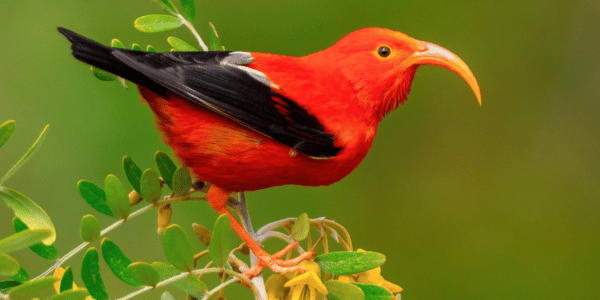
2. I’iwi (Drepanis coccinea)
The Iconic I’iwi: A Jewel of Hawaii
Among the most famous birds in Hawaii is the I’iwi (Drepanis coccinea), whose beauty lies in its bright red body feathers and peculiar curved bill. This bird represents the natural splendour and diversity of these islands.
Identification and Characteristics
Adult I’iwis are generally measured at around 6 inches long, with their strikingly red bodies contrasted by black wings and tails. The I’iwi’s specific morphology that sets it apart from other Hawaiian avifauna is its long, downwardly decurved beak shaped to extract nectar from tubular flowers such as lobelioids. Compared with other birds on this island, the I’iwi stands out because of its flashy colouration and unusual bill.
Habitat and Behavior
The Hawaiian lowland rainforests are the typical habitat for I’iwis, especially where Ohi’a Lehua trees dominate. They are highly manoeuvrable fliers seen flitting between blooms while obtaining food, making it possible to distinguish them from similar birds that feed on nectar alone. These birds produce various vocalizations ranging from high-pitched screeches to elaborate melodies like songs that have been heard throughout history, suggesting a character trait unique to these animals. Unfortunately, large populations of this species have gone down due to the destruction of their homes coupled with diseases such as avian malaria.
You May Also Like: Exclusive Hummingbird Migration Guide
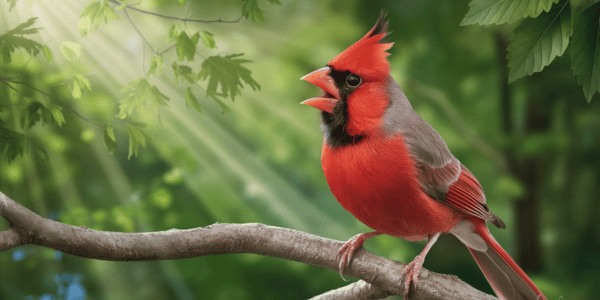
3. Red-Crested Cardinal (Paroaria coronata)
The Distinctive Red-Crested Cardinal
One Red-Headed bird species commonly found in Hawaii is the Red-crested Cardinal. This bird was brought over from South America in the 1930s and has become more common in urban parks, gardens, and open forests across this archipelago.
Identification and Characteristics
The Red-crested Cardinal can easily be identified by its bright red head, crest, and throat, which stand out from its white underparts with greyish-black wings and back. Adult cardinals measure around 7.5 inches in length and have a wingspan of approximately 11 inches. They possess solid and stout bills that are ideally suited for seed cracking as their primary diet.
Habitat and Behavior
They have adapted well to Hawaii’s wide-ranging habitats, ranging from coastlines to higher elevations. They usually feed on the ground or sit on low branches where they eat seeds, fruits, or insects. Red-crested cardinals live socially either in pairs or small flocks. Familiar tunes made of clear notes that are whistle-like are often heard emanating from hedges and gardens in Hawaiian parks.
You May Also Like: 20+ Colorful Backyard Birds in Michigan

4. Northern Cardinal (Cardinalis cardinalis)
The Brilliant Northern Cardinal
The Northern Cardinal (Cardinalis cardinalis) is one of North America’s most beloved birds, easily recognized due to its brilliant red body colouration and prominent crest. Although not originally found on these islands, the Northern Cardinal has been introduced there.
Identification and Characteristics
Male Northern Cardinals appear stunningly beautiful with bright red feathers tipped with black facial markings along the mask region, besides having a visible crest. On the other hand, females have more subdued colours, mostly brownish mixed with reddish hues.both have solid and pointed bills that are most useful for eating seeds by crushing them out of shells. These birds are medium-sized, ranging from about 8 to 9 inches long, with a wing span of about 10–12 inches long.
Habitat and Behavior
Northern Cardinals thrive in various ecosystems such as forests, gardens, and areas near humans’ homes, among others, making them familiar sights within similar environments even in Hawaii, where they usually get naturalized upon introduction, making them appropriate birds suited for this review. Cardinals are known for their territorial solid behavior, often defending their space with loud, straightforward songs and calls. The whistle of the Northern Cardinal is loud, varies in pitch and pattern, and is a familiar sound throughout its range.
You May Also Like: How to Keep Mosquitoes Out of Bird Baths

5. Red Avadavat (Amandava amandava)
The Charming Red Avadavat
The Red Avadavat, also known as the Strawberry Finch (Amandava mandala), is a small, brightly colored bird introduced to various parts of the world, including Hawaii. Native to tropical Asia, this species exhibits striking sexual dimorphism, especially during the breeding season, when males have a more conspicuous colouration.
Identification and Characteristics
Male red avadavats mostly have bright red plumage with white dots during the breeding season, while females and non-breeding males are brownish with some red patches. Small finches measure approximately 4 inches long and have short, stout beaks ideal for consuming seeds.
Habitat and Behavior
In Hawaii, the Red Avadavats are commonly seen in open fields, marshes, or farms, feeding on seeds or insects. They are gregarious birds frequently found in small flocks. During breeding season alone, males entertain females by engaging in elaborate courtship displays characterized by song and dance. These birds fill the air with musical notes, thus adding cheerfulness wherever they stay during this period.
You May Also Like: The Amazing Truth About Hummingbirds Sleeping Patterns

6. House Finch (Haemorhous mexicanus)
The Adaptable House Finch
The common adjective adaptable can describe the House Finch (Haemorhous mexicanus), a small bird of colourful plumage widespread in North America and recorded in Hawaii. This species is expected to be seen near human homes or even on the streets of any city.
Identification and Characteristics
Male House Finches are readily identified by their reddish faces, throats, and chests, which differ from the rest of their bodies. They have streaks of brown and white feather colours. On the other hand, females are uniformly brown without any red pigmentation. These finches are approximately 5-6 inches long, with wingspans around 8-10 inches. Their conical bills are perfect for eating seeds as their primary food source, but they also take fruits and insects when available.
Habitat and Behavior
House Finches are flexible birds that live in different environments, such as gardens, parks, and farmlands. For instance, in Hawaii, they tend to be found where people live and feed on foods such as seeds from bird feeders or fruit trees. They are friendly little creatures, often seen together in pairs or small groups. They communicate amongst themselves by singing a pleasant, warbling series of notes.
You May Also Like: What Time Do Birds Wake Up? Amazing Secrets
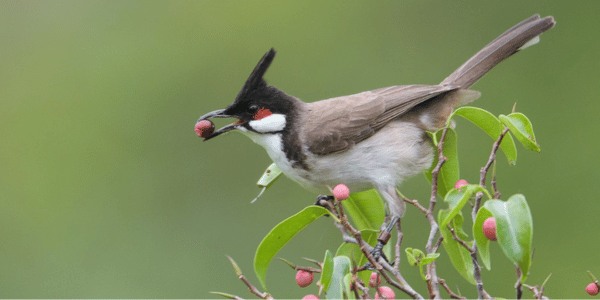
7. Red-whiskered Bulbul (Pycnonotus jocosus)
The Distinctive Red-Whiskered Bulbul
The striking Red-whiskered Bulbul (Pycnonotus jocosus) is from Asia but was introduced to Hawaii, where it became naturalized over time. This bird, whose unique mark is its cheerful song, gives the island’s avian community an exotic flavour.
Identification and Characteristics
Lengthwise measurement shows that the red-whisked bulbul measures about 7½ inches long, which makes it a medium-sized bird. Its red whiskers and black crest are highly conspicuous features of the white cheek patches on its face. The rest of its body is primarily brown and white. It has a sharp beak that enables it to eat different things, such as fruits, seeds, or insects.
Habitat and Behavior
Red-whiskered Bulbuls can often be seen in gardens, parks, and farmland foraging for food in Hawaii. They are usually social birds seen in pairs or small flocks. Their song is rather animated, composed of whistles, trills, and chatters. These birds thrive well both in cities and other wilder areas.
You May Also Like: What Happens When a Blue Jay Loses Its Mate
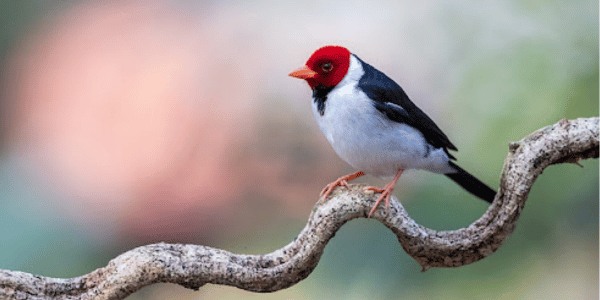
8. Yellow-billed Cardinal (Paroaria capitata)
The yellow-billed Cardinal, or Paroaria capital, is a stunning bird native to South America. It is usually found in Brazil, Bolivia, and Paraguay, inhabiting wetlands, riversides, and open woods.
Identification and Characteristics
Its black upper parts contrast vividly with its vibrant red head and throat, while its lower parts are white. Its most recognizable feature is its bright yellow beak, which gives it its common name. Typically, adult male yellow-billed cardinals measure up to around seven inches long. They have substantial trial bills adapted to mainly consisting of seeds, fruits, and insects.
Habitat and Behavior
This bird mainly feeds on low vegetation or the ground in pairs or small groups. Consequently, it is highly adaptable, surviving both natural habitats and those altered by humans. Moreover, because it is a social creature, it can also be seen visiting garden bird feeders. Its songs consist of a series of clear, melomusicales, making it pleasant to live in any landscape.
You May Also Like: 8 Important Tips for Bird Bath Installation
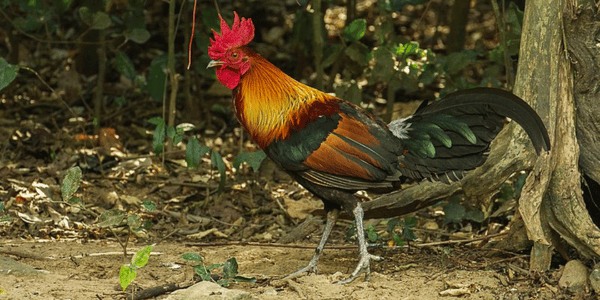
9. Red Junglefowl (Gallus gallus)
Red Junglefowl, scientifically referred to as Gallus gallus, is an indigenous wild bird from Southeast Asia’s forests. It is one of the most important birds in human history because it has been domesticated, culminating in many other species, including broilers and chickens.
Identification and Characteristics
The male red jungle fowl has glossy multicolored plumage that looks amazing, with primary colors combining reds, oranges, greens, blacks, long arched tail feathers, and a prominent comb. They also have bright red wattles. The females, on the other hand, have more cryptic brown feathering for camouflaging themselves. These birds grow up to medium size, males averaging about 27 inches long, including the length of their lengthy tails, while females are smaller.
Habitat and Behavior
Red jungle fowls are ground dwellers commonly found in dense forests, scrublands, and near agro areas. Their diet is omnivorous and includes seeds, insects, and small animals. Usually, they are self-effacing birds that prefer to lurk in the undergrowth; however, during the first or last moments of daylight, they can be seen foraging around. Their loud, crowing voices can be heard as early as dawn.
You May Also Like: Blue Grosbeak Vs Indigo Bunting
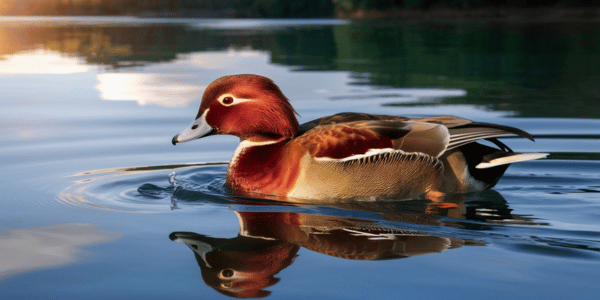
10. Redhead (Aythya americana)
The Redhead (Aythya americana) is a medium-sized diving duck native to North America known for its vibrant plumage; it commonly occurs in freshwater lakes, marshes, and coastal bays throughout the continent.
Identification and Characteristics
Male redheads have striking reddish-brown heads, black breasts, and gray bodies. Bright yellow eyes contribute to their unique look. Females, on the other hand, have more subdued brownish-grey feathers with pale faces. Both sexes have blue-gray bills with a black tip. These ducks usually grow 18-22 inches long with a wingspan of about 29 inches.
Habitat and Behavior
They prefer shallow lakes or marshes where they find food by diving, such as underwater plants, aquatic invertebrates, and small fish. Often, there are large numbers of them, especially when migrating from one place to another, while others may only stay at some specific areas. Redheads usually mix with other species of ducks because they tend to lead sociable lifestyles in water bodies. Their calls remain soft and low-keyed, and males emit a nasal whee-ow during courtship periods.
You May Also Like: How to Keep Squirrels Out of Bird Feeders
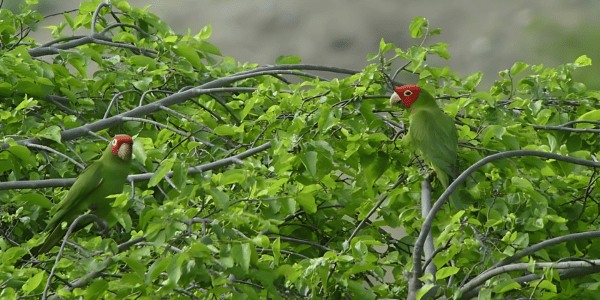
11. Red-masked Parakeet (Psittacara erythrogenys)
The Red-masked Parakeet, also known as Psittacara erythrogenys, is a vibrant bird from the dry forests and shrublands of Southwestern Ecuador and Northwestern Peru. This population has also become one of the notable urban feral parrot populations in San Francisco.
Identification and Characteristics
This parakeet can most easily be identified by its bright green plumage, with a red mask covering the face and forehead. The red extends slightly to the shoulders and beneath the wings. These birds grow to about 13-14 inches long, having long and tapering tails that add to their elegant appearance. Their beaks are powerful enough to crush seeds and nuts, which make up a significant part of their menu.
Habitat and Behavior
They are highly social birds; hence, they are often seen in different-sized groups. Their loud, raucous calls can be heard before the birds come into view. They love thriving on fruits, seeds, flowers, etc. however, when feeding on plant life, they prefer living in native dry forests. In any urban setting, they have adapted well to palm trees, providing them with habitats for nesting. At the same time, they feed upon different plant species and human-provided foods, including those from garbage areas. Due to habitat loss within their region of origin and aviculture appeal due to great adaptability and stunning look, these birds have become listed among species of concern.
Conclusion: Hawaii’s Red-Headed Avian Gems
The Red-Headed birds in Hawaii are evidence of the islands’ immense biodiversity and the distinctiveness of introduced species in shaping their ecosystems. From the colorful Red-crested Cardinal to the vital ʻIʻiwi outline, the birds form a rich collection of life, making bird watching and conservation unique in Hawaii. By protecting their breeds and homes, we secure for posterity the plethora of colors and songs as they pertain to the Red-Headed avians living in Hawaii.







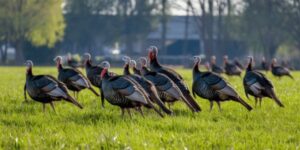

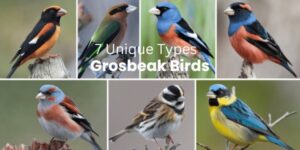
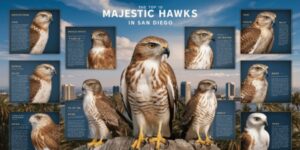

One Response